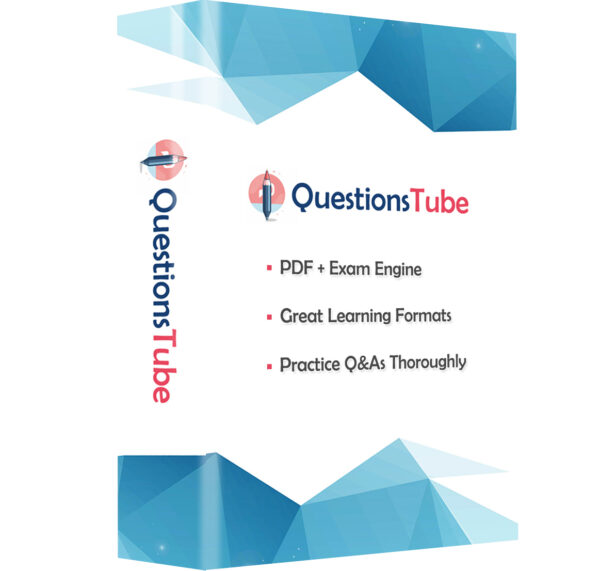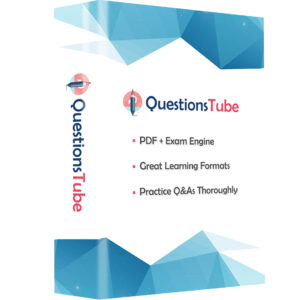Order our CLF-C02 Practice Questions Today and Get Ready to Pass with Flying Colors!
Go To test CLF-C02 Free Questions
Product Description
Introduce Amazon CLF-C02 Exam
Do you want to achieve the confidence to tackle role-based AWS certifications? Then you can choose to complete the AWS Certified Cloud Practitioner certification to prove that you have a foundational understanding of AWS Cloud concepts, services, and terminology. CLF-C01 exam was retired, now you need to take the CLF-C02 exam to complete the certification.
CLF-C02 Exam Overview:
- Level: Foundational
- Test Time: 90 Minutes
- Exam Questions: 65
- Delivery Method: Pearson VUE testing center or online proctored exam
- Languages: English, Japanese, Korean, Simplified Chinese, Traditional Chinese, Bahasa (Indonesian), Spanish (Spain), Spanish (Latin America), French (France), German, Italian, and Portuguese (Brazil)
Learning CLF-C02 Exam Objectives Is Strongly Recommended
- Understanding the economies of scale (for example, cost savings)
- Understanding the benefits of global infrastructure (for example, speed of deployment, global reach)
- Understanding the advantages of high availability, elasticity, and agility
- Understanding the economies of scale (for example, cost savings)
- Understanding the benefits of global infrastructure (for example, speed of deployment, global reach)
- Understanding the advantages of high availability, elasticity, and agility
- Understanding the benefits of the AWS Cloud Adoption Framework (AWS CAF) (for example, reduced business risk; improved environmental, social, and governance (ESG) performance; increased revenue; increased operational efficiency)
- Identifying appropriate migration strategies (for example, database replication, use of AWS Snowball)
- Understanding the role of fixed costs compared with variable costs
- Understanding costs that are associated with on-premises environments
- Understanding the differences between licensing strategies (for example, Bring Your Own License [BYOL] model compared with included licenses)
- Understanding the concept of rightsizing
- Identifying benefits of automation (for example, provisioning and configuration management with AWS CloudFormation)
- Identifying managed AWS services (for example, Amazon RDS, Amazon Elastic Container Service [Amazon ECS], Amazon Elastic Kubernetes Service [Amazon EKS], Amazon DynamoDB)
- Recognizing the components of the AWS shared responsibility model
- Describing the customer’s responsibilities on AWS
- Describing AWS responsibilities
- Describing responsibilities that the customer and AWS share
- Describing how AWS responsibilities and customer responsibilities can shift, depending on the service used (for example, Amazon RDS, AWS Lambda, Amazon EC2)
- Identifying where to find AWS compliance information (for example, AWS Artifact)
- Understanding compliance needs among geographic locations or industries (for example, AWS Compliance)
- Describing how customers secure resources on AWS (for example, Amazon Inspector, AWS Security Hub, Amazon GuardDuty, AWS Shield)
- Identifying different encryption options (for example, encryption in transit, encryption at rest)
- Recognizing services that aid in governance and compliance (for example, monitoring with Amazon CloudWatch; auditing with AWS CloudTrail, AWS Audit Manager, and AWS Config; reporting with access reports)
- Recognizing compliance requirements that vary among AWS services
- Identifying where to find AWS compliance information (for example, AWS Artifact)
- Understanding compliance needs among geographic locations or industries (for example, AWS Compliance)
- Describing how customers secure resources on AWS (for example, Amazon Inspector, AWS Security Hub, Amazon GuardDuty, AWS Shield)
- Identifying different encryption options (for example, encryption in transit, encryption at rest)
- Recognizing services that aid in governance and compliance (for example, monitoring with Amazon CloudWatch; auditing with AWS CloudTrail, AWS Audit Manager, and AWS Config; reporting with access reports)
- Recognizing compliance requirements that vary among AWS services
- Describing AWS security features and services (for example, security groups, network ACLs, AWS WAF)
- Understanding that third-party security products are available from AWS Marketplace
- Identifying where AWS security information is available (for example, AWS Knowledge Center, AWS Security Center, AWS Security Blog)
- Understanding the use of AWS services for identifying security issues (for example, AWS Trusted Advisor)
- Deciding between options such as programmatic access (for example, APIs, SDKs, CLI), the AWS Management Console, and infrastructure as code (IaC)
- Evaluating requirements to determine whether to use one-time operations or repeatable processes
- Identifying different deployment models (for example, cloud, hybrid, onpremises)
- Identifying connectivity options (for example, AWS VPN, AWS Direct Connect, public internet)
- Describing relationships among Regions, Availability Zones, and edge locations
- Describing how to achieve high availability by using multiple Availability Zones
- Recognizing that Availability Zones do not share single points of failure
- Describing when to use multiple Regions (for example, disaster recovery, business continuity, low latency for end users, data sovereignty)
- Describing at a high level the benefits of edge locations (for example, Amazon CloudFront, AWS Global Accelerator)
- Recognizing the appropriate use of different EC2 instance types (for example, compute optimized, storage optimized)
- Recognizing the appropriate use of different container options (for example, Amazon ECS, Amazon EKS)
- Recognizing the appropriate use of different serverless compute options (for example, AWS Fargate, Lambda)
- Recognizing that auto scaling provides elasticity
- Identifying the purposes of load balancers
- Deciding when to use EC2 hosted databases or AWS managed databases
- Identifying relational databases (for example, Amazon RDS, Amazon Aurora)
- Identifying NoSQL databases (for example, DynamoDB)
- Identifying memory-based databases
- Identifying database migration tools (for example AWS Database Migration Service [AWS DMS], AWS Schema Conversion Tool [AWS SCT])
- Identifying the components of a VPC (for example, subnets, gateways)
- Understanding security in a VPC (for example, network ACLs, security groups)
- Understanding the purpose of Amazon Route 53
- Identifying edge services (for example, CloudFront, Global Accelerator)
- Identifying network connectivity options to AWS (for example AWS VPN, Direct Connect)
- Identifying the uses for object storage
- Recognizing the differences in Amazon S3 storage classes
- Identifying block storage solutions (for example, Amazon Elastic Block Store [Amazon EBS], instance store)
- Identifying file services (for example, Amazon Elastic File System [Amazon EFS], Amazon FSx)
- Identifying cached file systems (for example, AWS Storage Gateway)
- Understanding use cases for lifecycle policies
- Understanding use cases for AWS Backup
- Understanding the different AI/ML services and the tasks that they accomplish (for example, Amazon SageMaker, Amazon Lex, Amazon Kendra)
- Identifying the services for data analytics (for example, Amazon Athena, Amazon Kinesis, AWS Glue, Amazon QuickSight)
- Choosing the appropriate service to deliver messages and to send alerts and notifications
- Choosing the appropriate service to meet business application needs
- Choosing the appropriate service for AWS customer support
- Choosing the appropriate option for business support assistance
- Identifying the tools to develop, deploy, and troubleshoot applications
- Identifying the services that can present the output of virtual machines (VMs) on end-user machines
- Identifying the services that can create and deploy frontend and mobile services
- Identifying the services that manage IoT devices
- Identifying and comparing when to use various compute purchasing options
- Describing Reserved Instance flexibility
- Describing Reserved Instance behavior in AWS Organizations
- Understanding incoming data transfer costs and outgoing data transfer costs (for example, from one Region to another Region, within the same Region)
- Understanding different pricing options for various storage options and tiers
- Understanding the appropriate uses and capabilities of AWS Budgets, AWS Cost Explorer, and AWS Billing Conductor
- Understanding the appropriate uses and capabilities of AWS Pricing Calculator
- Understanding AWS Organizations consolidated billing and allocation of costs
- Understanding various types of cost allocation tags and their relation to billing reports (for example, AWS Cost and Usage Report)
- Locating AWS whitepapers, blogs, and documentation on official AWS websites
- Identifying and locating AWS technical resources (for example AWS Prescriptive Guidance, AWS Knowledge Center, AWS re:Post)
- Identifying AWS Support options for AWS customers (for example, customer service and communities, AWS Developer Support, AWS Business Support, AWS Enterprise On-Ramp Support, AWS Enterprise Support)
- Identifying the role of Trusted Advisor, AWS Health Dashboard, and the AWS Health API to help manage and monitor environments for cost optimization
- Identifying the role of the AWS Trust and Safety team to report abuse of AWS resources
- Understanding the role of AWS Partners (for example AWS Marketplace, independent software vendors, system integrators)
- Identifying the benefits of being an AWS Partner (for example, partner training and certification, partner events, partner volume discounts)
- Identifying the key services that AWS Marketplace offers (for example, cost management, governance and entitlement)
- Identifying technical assistance options available at AWS (for example, AWS Professional Services, AWS Solutions Architects)
How can you prepare for the CLF-C02 exam well? One of the best ways is to use CLF-C02 practice questions of QuestionsTube.
Our CLF-C02 Practice Questions include:
– CLF-C02 exam questions and answers: These are the most updated and accurate questions and answers that reflect the real exam content and format. You can practice them online or offline, and check your answers with detailed explanations.
– CLF-C02 exam questions pdf: It is the most valid and effective pdf file that contains the actual exam questions and answers. You can download it and use to read all the questions and answers anytime and anywhere.
– CLF-C02 ICE exam engine: This is a powerful tool that simulates the real exam environment and allows you to test your knowledge and skills under time pressure. You can customize your exam mode, difficulty level, question type, and number of questions.
– CLF-C02 free update: This is a great advantage of QuestionsTube’s CLF-C02 exam questions. You can choose the free update privilege to make sure that you will always have the latest study materials in a valid period.
By using our CLF-C02 exam materials, you can:
– Save your time and money: You don’t need to spend hours searching for other sources or paying for expensive courses or books. Our CLF-C02 exam materials are enough to prepare you for the exam.
– Enhance your confidence and performance: You can familiarize yourself with the exam format and content, and improve your speed and accuracy. You can also identify your strengths and weaknesses, and work on them accordingly.
– Guarantee your success: We have a high pass rate and a full refund policy. If you use our CLF-C02 exam materials and fail the exam, we will refund your money without any hassle.










Reviews
There are no reviews yet.